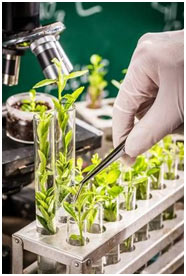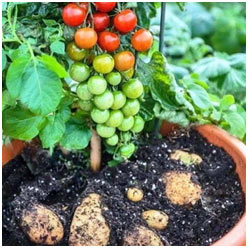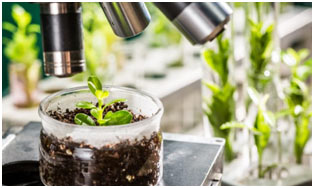Introduction
Plant breeding is used to produce desired traits and changes in plants as a result of their use by humans. Adapting sustainability within agricultural productivity with respect to climate changes, environmental pressures and other such factors strongly depends on the development of resilient, high-yielding crops.
From the past few years, biotechnology has made innovations in the genetics of plants. As plant breeding relies on genetic variability within crops so new and improved varieties of plant species can be produced.
These improved plant varieties have led to improved agricultural productivity in terms of quality, quantity, nutritious foods, less use of fertilizers, insect pests and herbicides resistant plants, plants with great resilience to pathogenic diseases, etc.
Domestication
It is the process of artificial selection conducted by humans. Domestication produces plants with fewer undesirable traits of wild plants. It makes them dependent on artificial systems. Today, many crops are the result of domestication.
A cultivated crop species that has evolved from the wild population due to selective pressure is called a landrace. These are the plants that are ideally suited to a particular environment o region. The landrace of rice; Oryza sativa subspecies indica is its example.
Here are discussed a few approaches or techniques of plant breeding which lead to the development of plants with desired traits.
Approaches of Plant Breeding

1. Breeding of seedling populations
Charles Darwin and Gregor Mendel first demonstrated the interspecific hybridization within a plant species. It was further developed and modified by geneticists and plant breeders. Plant breeders realized that Mendel’s research work and findings on the non-random nature of inheritance can be applied to seedling populations.
2. Heterosis
Heterosis or Hybrid vigor was described by George Harrison Shull in 1908. It shows the tendency of the progeny of a specific cross to outperform both parents. There was the detection of effectiveness and functionality of heterosis for plant breeding.
It has led to the development of new inbred lines. Heterosis was first used in the Maize species to produce hybrids with desired traits.
3. Wide crosses
Numerous plant tissue culture techniques are used by plant breeders to produce progeny from fruitless mating. Interspecific and intergeneric hybrids are produced from the cross of related species.
These crosses are known as wide crosses. The cereal triticale is a wide cross of a heat and rye hybrid. The first generation produced from the cross was sterile. So, the cell inhibitor colchicine was used to double the number of chromosomes.
Cells with an uneven number of chromosomes are sterile.
4. Cytoplasmic Male Sterility (CMS)
In maize, another plant breeding technique – cytoplasmic male sterility was developed in 1933. It was described by Marcus Morton Rhoades. It is a maternally inherited trait that makes plants produce sterile pollen. It enables the production of hybrids.
5. Somatic Hybridization
Protoplast fusion can also be sued for the production of hybrids. In this case, the protoplast is fused in an electrical field. Cell fusion led to nuclear fusion. It produces an amphidiploid somatic hybrid cell.
Fusion products of closely related but sexually incompatible plants have been grown to flowering plants. The most common and famous example is of potato and tomato hybrid.
Potato + tomato hybrid = Pomato.

6. Embryo Rescue
Failure to produce a hybrid may be due to pre or post-fertilization incompatibility. If fertilization is possible between two species or genera, the hybrid embryos may abort before maturation.
If this does occur the embryo resulting from an interspecific or intergeneric cross can be rescued and cultured to produce a whole plant. Such a method is called embryo rescue. This technique has been used to produce new rice for Africa – an interspecific cross of Asian rice and African rice.
7. Micropropagation
In micropropagation and cloning, tissues are excised from root, stem, petiole, or seedling. They are induced to regenerate plants. All regenerants from tissues of one source plant constitute a clone.
8. Somaclonal Variations
Chemical mutagens such as EMS and DMSO, radiation, and transposons are used to generate mutants with desirable traits. Classical plant breeders also generate genetic diversity within a species by exploiting a process called somaclonal variations.
It occurs in plants produced from tissue culture, particularly plants that are derived from callus. Induce polyploidy and the addition or removal of chromosomes using a technique called chromosome engineering may also be used.

